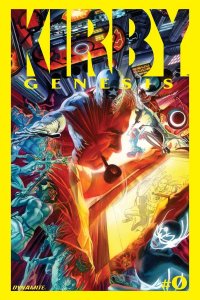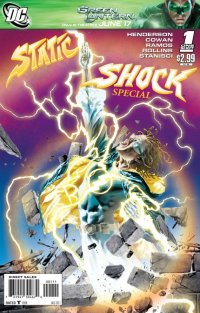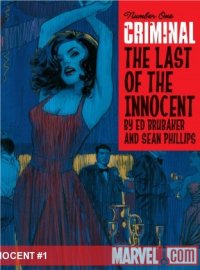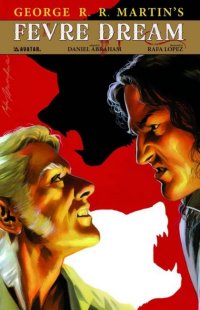Kirby: Genesis #0 (Dynamite Entertainment, $1.00)
By Devon Sanders
Jack Kirby. Just a mention of the name cause the comics fan brain to spark and fire. We admire. We find ourselves fascinated by the man’s overall output and comics resume’. Most of all, we find ourselves in awe of this man’s imagination, an imagination seventeen years since his passing, is as vibrant ever. Just this summer alone, Marvel Entertainment will release movies based on Thor, Captain America and The X-Men, just three of the creations that have sprung from the fiery mind of this genius, comics’ modern day Prometheus. History being selective, the Kirby name has been left to play Prometheus to others’ Zeus. While Stan Lee’s name has been incorporated within pop culture lexicon, our Jack’s name is mainly only spoken of within comics circles. No small feat yet certainly not his due. In store now, Kirby: Genesis #0, a virtual catalog and testament of this man’s unbridled, unparalleled genius, all brought to you by two of comics’ best, writer Kurt Busiek and artist Alex Ross.
40 years ago, a probe was launched across the cosmos bearing with it hope and mankind’s promise. Today, the signal has been received and with that, a new mythology.
Writer Kurt Busiek has, through his plotting and dialogue, captures all that’s about Kirby. The opening is filled with foreboding. Declarations aren’t not only declared shouted. Everything just feels big and Busiek uses the exclamation marks to prove it.
Art director, painter and layout artist perfectly understands and possesses the scope needed to bring together the myriad worlds of Kirby. Ross’ perfectly captures Kirby’s energy while never letting you forget he’s fully in there as well. Series artist Jack Herbert is a true find, managing to somehow hold this pairing of Ross and Kirby together and establish himself in the process using flourishes that somehow recall another comics great, Neal Adams.
Of note are the wonderful notes and beautiful Kirby and Ross character sketches making this certainly the best dollar dollar you’ll spend in a comics shop.
Kirby: Genesis #0 with its creators stepping up and stepping aside to bring together the whole of Kirby’s creator-owned imagination shine is very much what’s right with comics right now.
Rating: 




Out of a Possible 5 Stars
 Static Shock Special #1 (DC Comics, $2.99)
Static Shock Special #1 (DC Comics, $2.99)by Graig Kent
I’ve been rather slowly working my way through the various seasons of Angel streaming on Netflix, having never actually watched it before. It took me a while to get through the first season and the start of the second season as they’re hampered by its episodic storytelling, as opposed to the serialized storytelling that made watching Buffy as addictive as heroin. As well, the characters — Angel, Wesley, and Cordelia — start off a rather motley crew, without much to bind them besides their loose connection to one another via Buffy. The fourth of the group, Gunn, comes into the group as a gang runner, but his gang protects his Los Angeles hood from vampires and demons rather than selling drugs and whatnot. Gunn, early on in the series fit in the cast even less than the rest, partly intentional — as he’s supposed to be fighting vampires, not working beside one — and partly unintentional — as the writers seemed to have no idea how to write for his character. Gunn (and the writers behind him) slowly found his voice, the character ultimately coming into his own in the fourth season, but for three seasons there was a lot of awkward “street talk” coming out of his mouth, made worse on the Gunn-focussed episodes where he returns to visit/rejoin/confront his old gang of demon slayers and there are entire exchanges written like that.
Nothing dates a story worse than bad “jive talk”, but far more painful are those stories set in an “urban” environment coming from a writer that has little feel or sense of the dialect (it’s worse than when writers try to write foreign characters with broken English, or, you know, Australians or Brits with a limited selection of colloquialisms). Look, I’m not going to pretend I know much better. I’m a white, middle-class, mid-30’s Canadian. My sense of street slang kind of died in 1993 when gangsta rap took over for consciousness hip-hop and people stopped using the term jimmy hats (but did they ever, really?). But at the same time, you just know when reading dialogue by how it flows whether it feels natural or not. You know when it’s authentic.
Unfortunately, like poor Gunn and his crew in Angel, much of this Static Shock Special is pinned down by its attempts to connect its thug villains to the urban setting of Dakota through their dialogue, and failing. Do people still actively use the term “the man”, (as in “oh, that make you ‘the man’ now?”) outside of retro ’70’s or ’80’s comedies? Writer Felicia D. Henderson comes to comics from television, having credits on Sister, Sister, Family Matters, Moesha and more recently Gossip Girl and Fringe. But for a TV writer her dialogue here has a surprising lack of flow, and not just in dealing with the gang bangers, but every character… the thug-talk just being the most blatant example, sounding pretty much exactly like it would if, say, Eddie were to get pressured from some ne’er-do-wells from his school into joining them, starting with an initiation ritual involving Urkel. (You know how it plays out, Eddie feels guilt seeing the harm he about to inflict on Steve, and finally stands up to the bullies, so they turn on him, but thankfully there’s Carl, in his cop uniform to back him up, and threaten them with reciting the ingredients of Twinkies. Bad guys flee and leave Eddie alone for good. Just like in real life.)
In this Special, which is “special” somewhat in the “After School Special” sense of the word, Virgil “Static” Hawkins’ uncle is finally released from prison for a crime he didn’t commit. While inside he had a scrum with another inmate, taking out his eye. Now that both are on the street, the thug — having since been caught up in the same “bang baby” event that gave Virgil his powers — is out for revenge. Virgil’s uncle dies, but from a heart attack and not anything really to do with his altercation with the gangsters, still Virgil sets his sights of shutting their drug operation down.
The characters here relate to one another like they would on the set of a 1990’s cable network TV show, just like those Henderson used to write, up to and including the conflict. It’s really all forced repartee and overwrought meaningful moments, but none of it is what you’d call natural. It’s tin-eared at best, patronizing at worst. The pacing of the book as well is not great, with practically every scene transition being a rather jarring one. In the background are attempts at social commentary, containing a message or three, but it tries to work too many of them in, and fails to do any of them justice, hampered by a lack of clarity on what Henderson’s trying to say about them, if anything at all.
I don’t want to hate this book, as I have exceptionally fond memories of Static, and I think he should be as vital a character in the comics lexicon as, at least, Hawkman and Aquaman. I tried to champion his return to comics in Teen Titans not too long ago (also written by Henderson) but it wasn’t good, and it pained me. When Dwayne McDuffie died suddenly earlier this year, I read as many recollections of the man that I could find, discovering in the process that Henderson was working on a new Static series that was supposed to be released this year. Apparently this isn’t a trial-run, nor part of an aborted attempt at the series, which means a regular series could still be in the pipeline (for September most likely as part of DC’s big reboot). This special leaves me with an equal mix of anticipation and dread.
But this issue isn’t a complete loss. Actually, the redeeming elements make it almost essential for any fan of Dwayne McDuffie. Though, apparently it’s intended as a tribute in its entirety, it feels instead like an afterthought as the special shoehorns in the tribute part in the back of the book, featuring an absolutely beautiful 2-page story from Matt Wayne and John Paul Leon, a touching essay from Michael Davis, and a series of pin-ups from some Milestone collaborators and pros who were fans (there needs to be an Icon series drawn by Jamal Igle NOW). The art of the main story is by Milestone founder Denys Cowan, with inks from Milestone acolytes Rodney Ramos, Prentis Rollins and John Stanisci (though I should say it’s not Cowan’s strongest work, it’s still nice to see), with cover by J.H. Williams. Despite the somewhat awkward storytelling there is a lot of love in these pages, in a sense like joining in on a Milestone family reunion, or, perhaps more aptly, a wake. All the same, I leave it with mixed emotions.
Rating: 




Out of a Possible 5 Stars
Criminal: The Last of the Innocent #1, Icon, $3.50

By Adam Prosser
I don’t think there’s a medium that’s quite as beholden to its own past as comics. By the nature of the medium, an artist’s influences are likely to shine through at a glance, even if he or she didn’t intend them to be obvious. But of course most comic artists *are* trying to call back to a previous artist, style, or genre in some way, even if they’re subverting or building on it, and of course there’s no way to instantly evoke a set of expectations in your audience than to ape a certain art style.
So when Ed Brubaker and Sean Phillips render the characters in The Last of the Innocent as, for all intents and purposes, the gang from Archie comics, it’s not just a clever wink to the past. It’s an efficient bit of storytelling. Riley Richards is an All-American boy who grew up in the small-town paradise of Brookview in the late 60s. Now it’s 1982, Riley’s unhappily married to ultra-rich society girl Felicity, and deeply in debt to some unsavoury characters. Learning that his dad is very sick, possibly near death, Riley heads back to Brookview, where he reconnects with his ex (?)-junkie best friend and his childhood sweetheart—and stumbles across a less-than-legal solution to his financial woes.
The “loss of innocence” theme is of course a bedrock of noir, but by riffing on the classic teen humour comics of the past, Brubaker and Phillips bring a whole new level of thematic resonance to the book. It would have been easy (and not very original) to simply make this a punk-rock evisceration of the old Archie comics, but B & P are actually coming at it from the opposite angle—they’re using the iconography of the Archie comics to serve this particular story. Rendering the protagonist as a pseudonymous version of Archie Andrews and his hometown as Riverdale, U.S.A., instantly evokes a particular kind of idyllic childhood—one that’s not only rich with existing history from the comics, but that’s probably shared by the audience, if they grew up reading them. It also packs a real emotional punch when you realize what the characters have lost. In terms of deconstruction, this kind of thing has been done before—it’s practically Alan Moore’s wheelhouse, and going further back people like Robert Crumb and the Mad Magazine cartoonists used it as the basis for comedy decades ago—but Brubaker and Phillips aren’t simply going for a cheap gag here. They want to build on the audience’s shared history with comics to create an emotional connection, and they’ve succeeded. Reading this story exactly replicates the feeling of catching up with old friends—you may be sad to see what’s become of them, but it’s always good to see them again.
Rating: 




Out of a Possible 5 Stars
 George RR Martin’s Fevre Dream (Avatar/Bantam, $34.99 hardcover)
George RR Martin’s Fevre Dream (Avatar/Bantam, $34.99 hardcover)
By Jeb D.
I should begin by saying that I’m technically reviewing the 10-issue comic series here; I’m traveling on business right now, and I’ve heard that the hardcover collection may have missed its May ship date. I would presume, though, that when it is available, most of what I have to say will be relevant.
Like a lot of people, I’ve been hooked on HBO’s Game of Thrones, but I decided I’d wait to actually read any of Song of Ice and Fire until HBO runs out its string of adaptations. Being of a mind to sample more of George RR Martin’s work, though, I hunted around and ran across this comic adaptation of one of his earlier novels, and decided to give it a spin.
Fevre Dream is set along the Mississippi River in the years before the Civil War. That’s an unusual way to describe a setting, but it’s apt: the sense of place has less to do with the states or cities which are visited in the course of the story, than with the power and primacy of the Mississippi as the economic and environmental determinant of life along its pathways. Because, while there are elements of familiar fantasy in the story, its principal character, Abner Marsh, is a very authentic-feeling riverboat captain, and much of his story is built around what appears to be careful research into the ways and means of life in such a position in 1857: we learn a fair amount about the cargo, passengers, and operation of the great steamers (including the particular skillset that separates a captain from a pilot), without ever being overwhelmed with the exposition.
The book opens with Marsh taking on a passenger with unusually specific demands… and the fact that one of them involves his never coming out in the sunlight pretty well tips us off where we’re headed (if the wildly unrepresentative cover of the half-dressed female temptress didn’t clue us in already): guy’s a vampire, though we learn that there is more (and, in some way, less) to him than that. This Joshua York is on a mission (secret, of course), but his need for secrecy doesn’t prevent a bond growing between him and Captain Marsh: indeed, they become partners in a venture to build the biggest, fastest boat on the river. And while Abner’s eyes are alight with the possibility that the new boat, the Fevre Dream, may give him the chance to outstrip the legendary paddle-wheeler, the Eclipse, York’s plan is clearly tied in with the savage family of vampires we find, in parallel segments of the book, living on a decaying southern plantation.
The setting and atmosphere certainly suggest Anne Rice, and part of that is due to the fact that the novel being adapted is more than twenty years old: a clan of fiends led by a “Bloodmaster,” fights for dominance in the clan, the promise of eternity luring humans into their circle, and their opposition being a lone champion for a human race to which he does not belong, and which will never know or appreciate him, probably felt a good deal fresher back then. But if those trappings feel familiar, the storyline veers far from the expected: though there are seductive female vamps in the story, they play relatively small roles; and, indeed, unlike Rice, Martin never makes the prospect of vampiric existence particularly romantic. The story at the core of the book is not that of York and his monstrous counterpart and rival Damon Julian, but of the tests to which the bond between Marsh and York is put in the course of events: it’s a book about friends, not fiends, and about the overall question of what constitutes humanity in a time and place where men and women are still sold as chattel.
I’ve only touched on elements from the novel because that’s pretty much what the comic is: not an “adaptation” of the book, but something closer to a “transcription”: Daniel Abraham is not credited with having “written” the comic, he simply provided the “sequential adaptation.” My guess is that Martin insisted that the book be more or less transcribed as close to word-for-word as possible, with the result that the ten issues of the comic have a tendency to meander: there’s no particular reason that the series couldn’t have been done in six, possibly eight installments. Still, the story never feels draggy for more than a few pages at a time, and much of the lore of life on the river would have had to be sacrificed. I don’t know that Abraham adds anything to the story, but that clearly was not his brief.
The fluid art by Rafa Lopez is adequate: his facial work can be sketchy (it wasn’t till halfway through the story that I discovered that Marsh is supposed to be “unusually ugly”: his face just seemed sloppily drawn), but the (admittedly rare) action scenes are effective, and when he’s called upon to produce stomach-churning gore, he delivers. His biggest disadvantage is that you see his stuff after the stunning covers by Felipe Massafera, whose moss-covered settings, doomed characters, and voluptuous vamps suggest something like a darker, satanic version of Disney’s Haunted Mansione. and which would make a great set of prints.
Fevre Dream, as a comic, is more a “good read” than a compelling “gotta have,” mostly due to its over-extended length and pacing, but if you find the time and place of interest, it’ll work some magic on you.
Rating: 




Out of a Possible 5 Stars